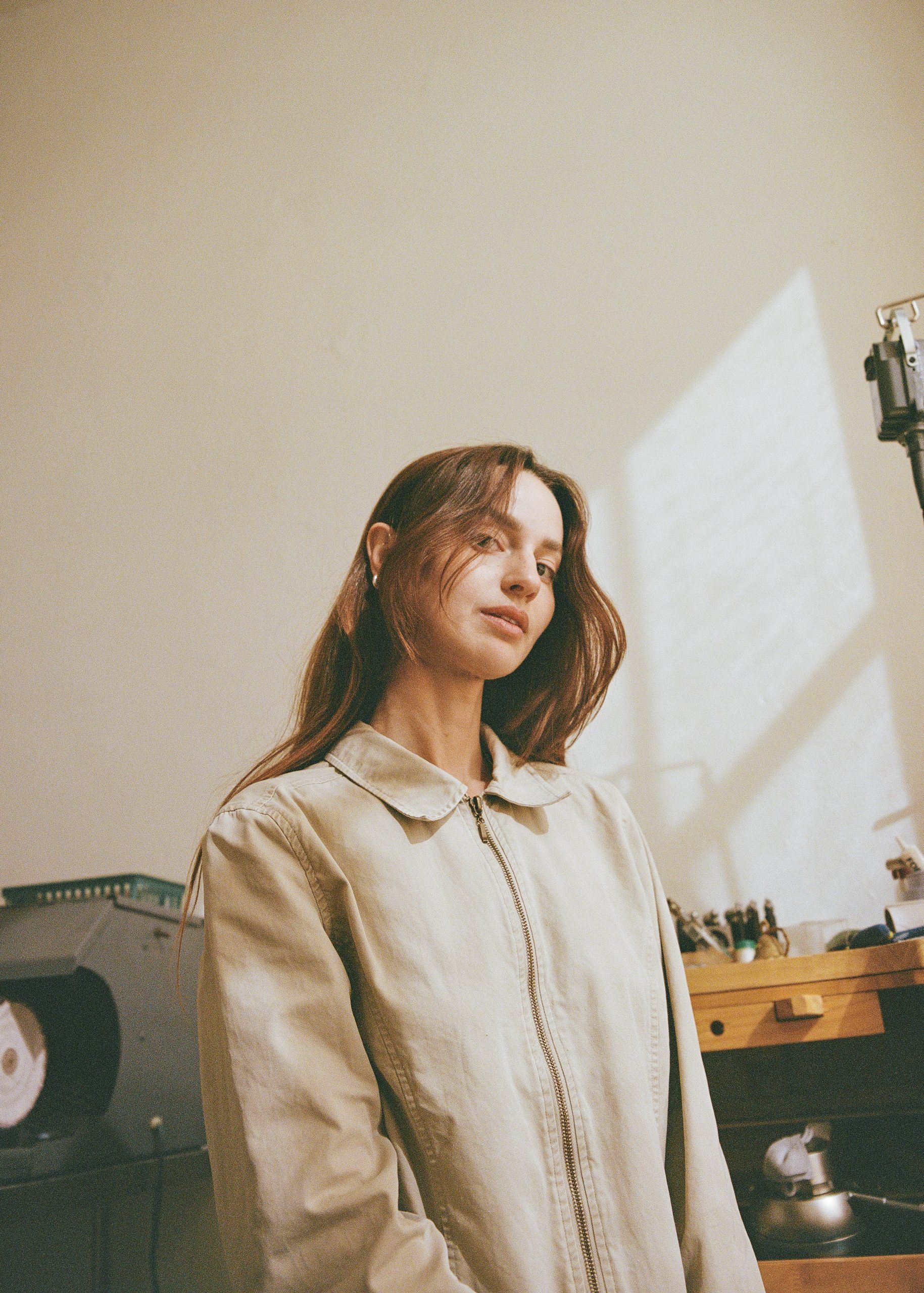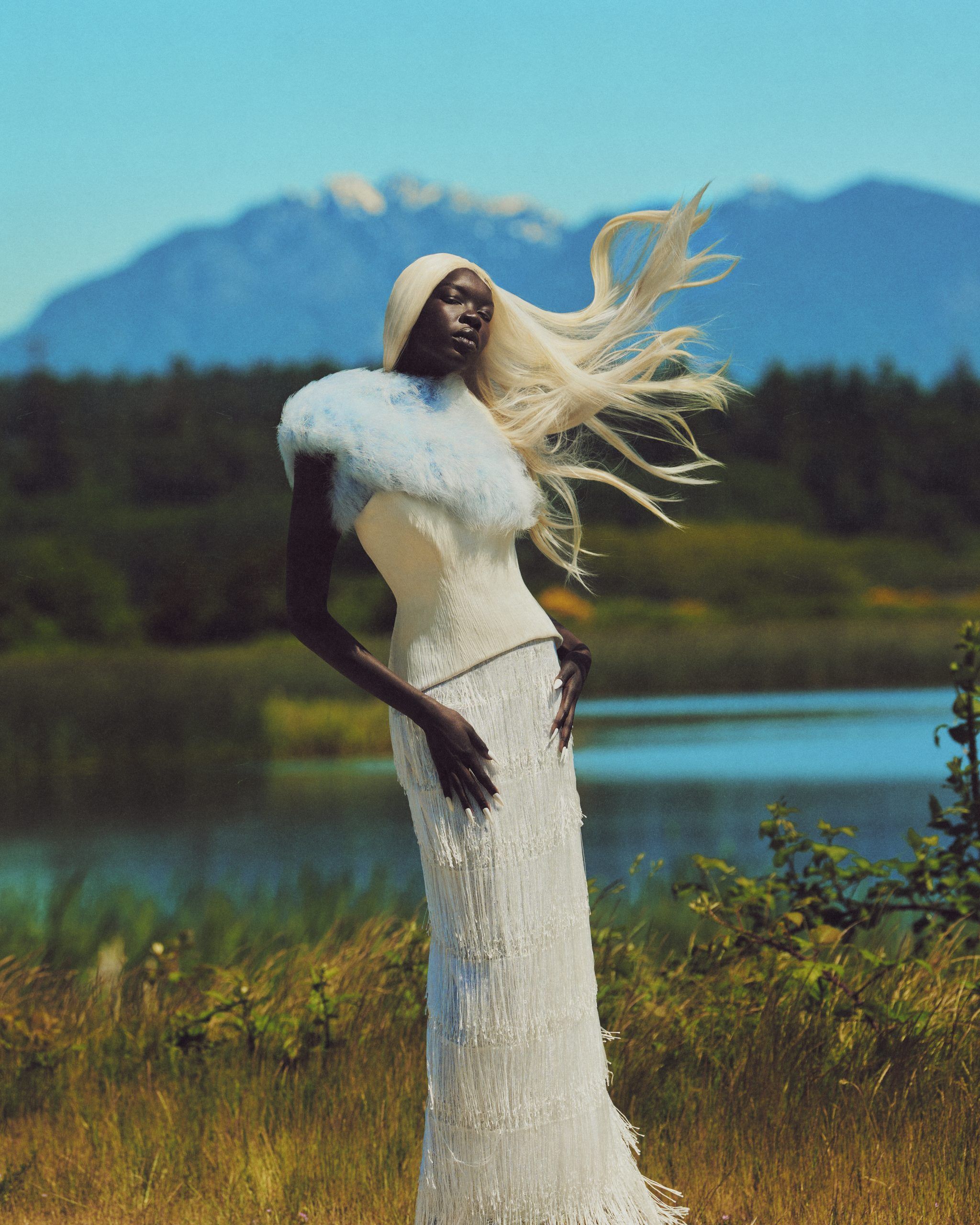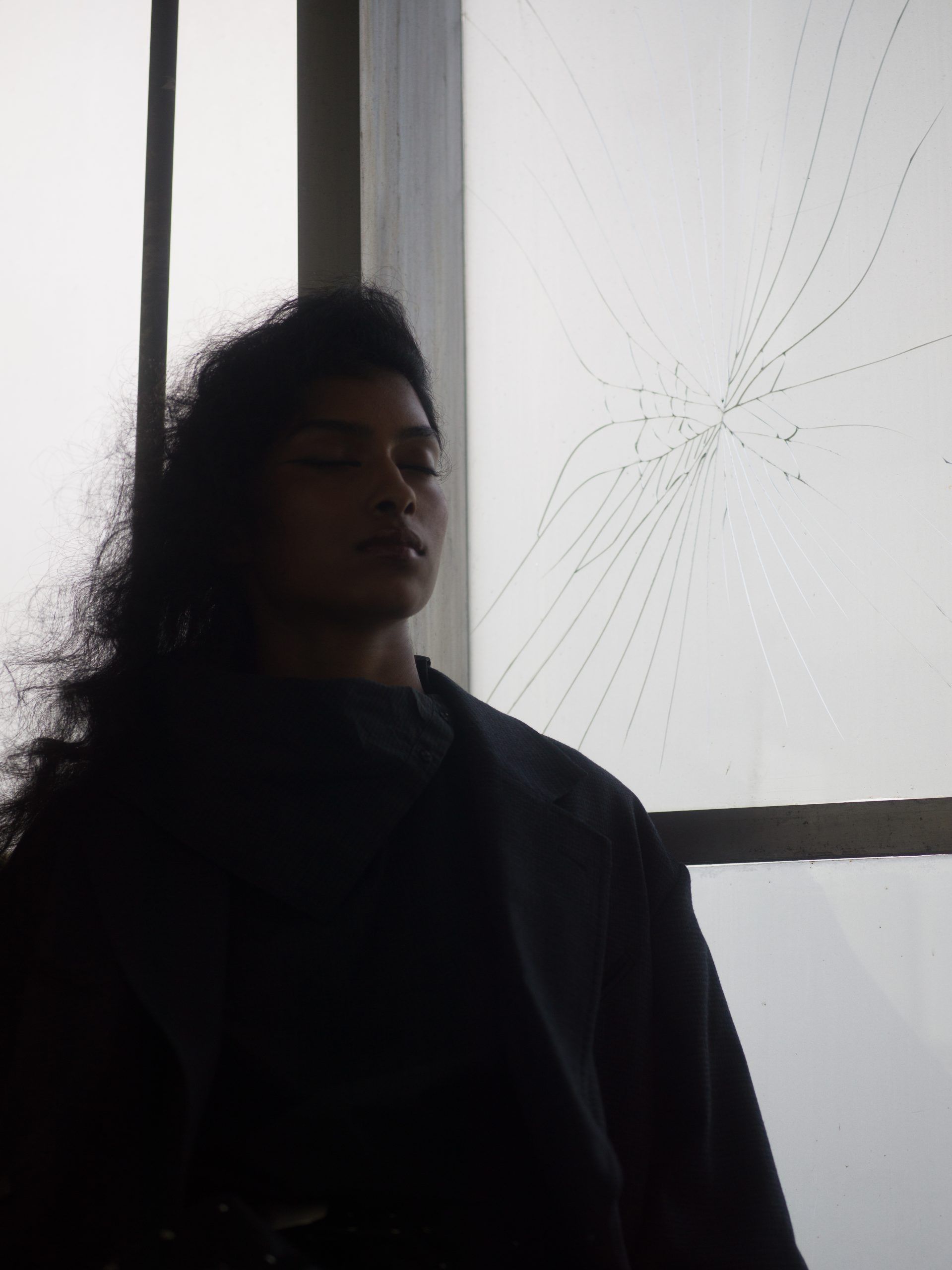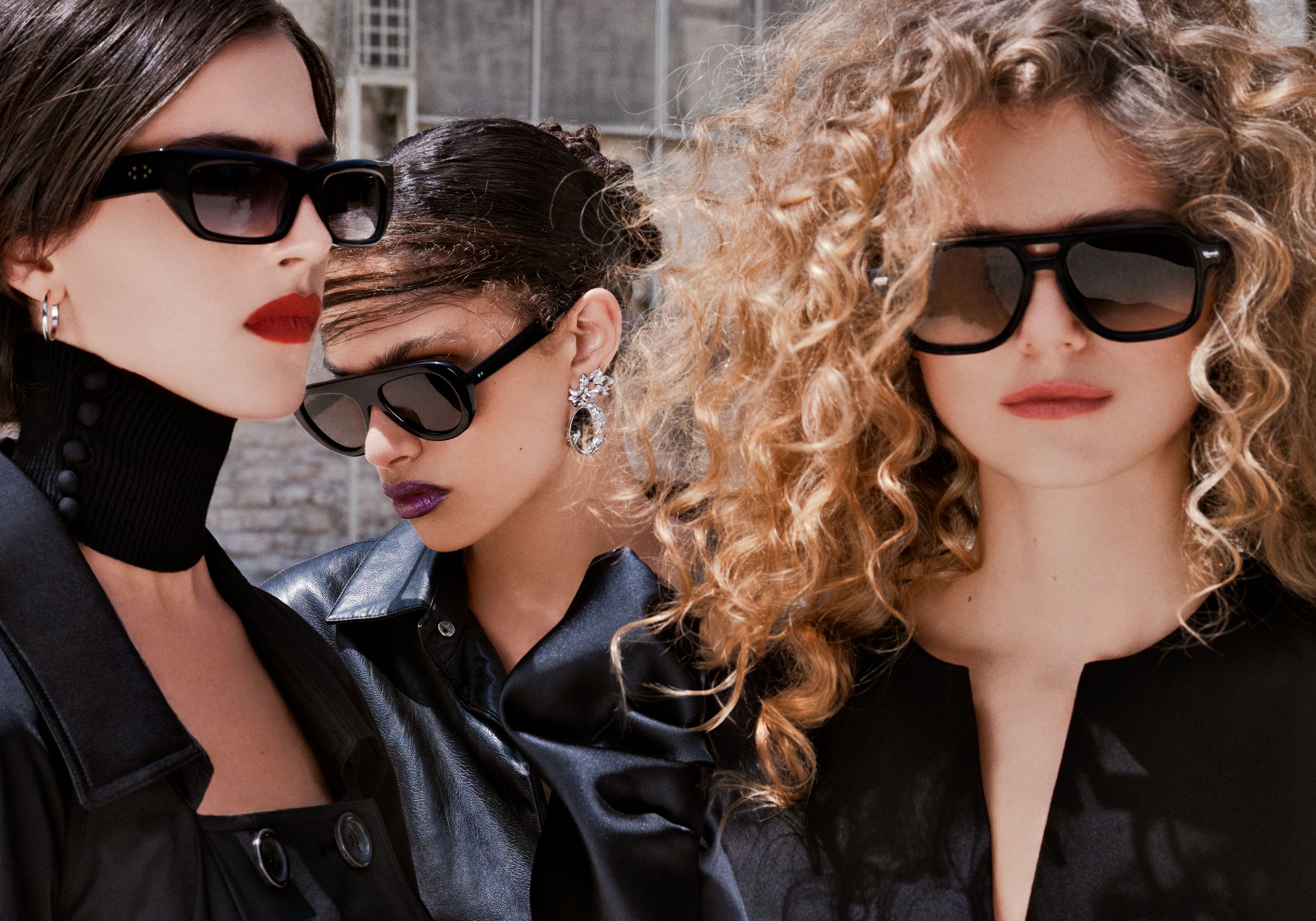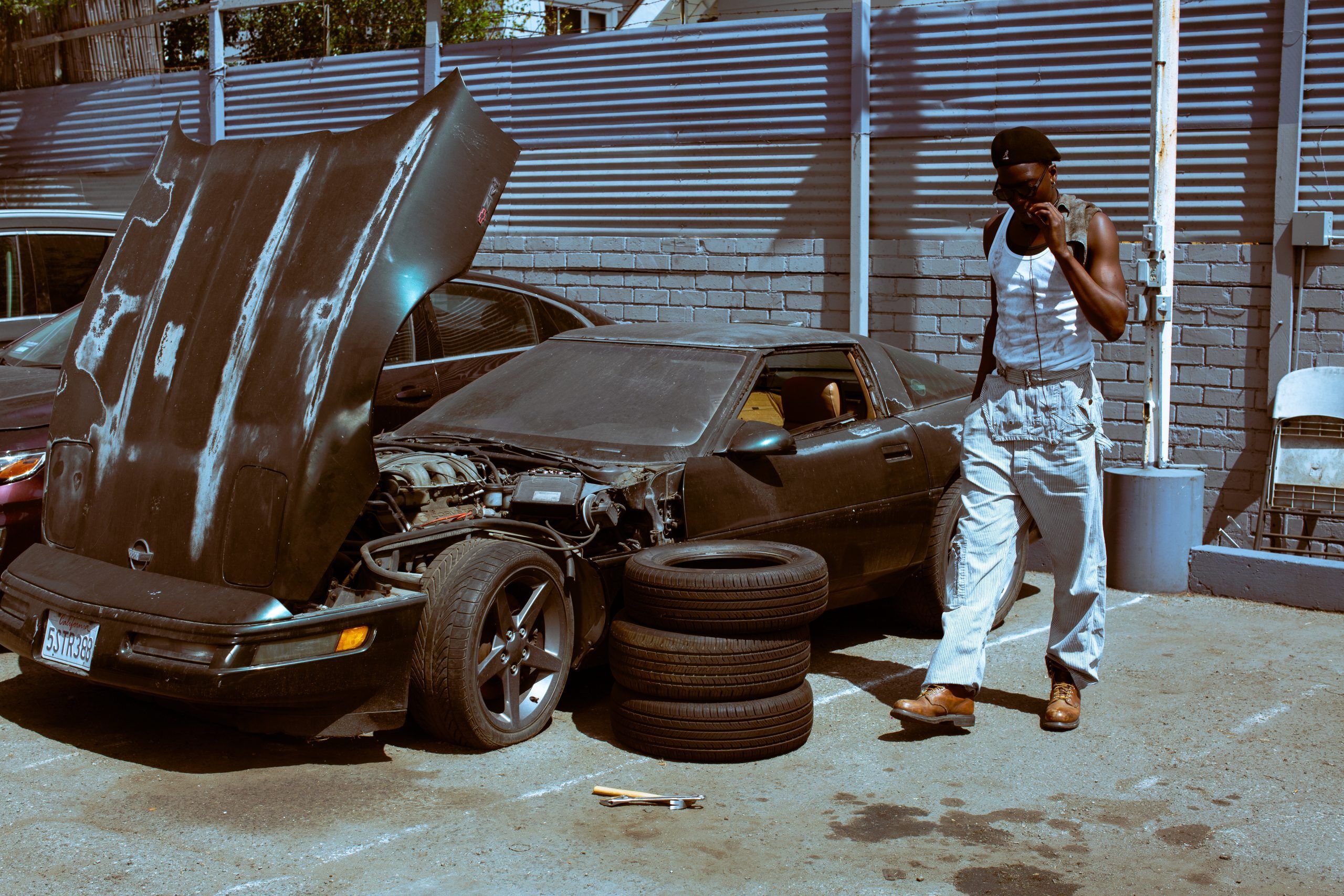Jess Hannah, the Los Angeles–based designer behind J. Hannah, has built a name for herself through jewelry that feels both modern and timeless; pieces that whisper in subtle details rather than shout in excess. Alongside her cult-favourite line of nail polishes, her work is defined by a devotion to restraint, proportion, and intention.
But beyond the polished collections, Hannah continues to explore and experiment in her personal studio practice. After years away from the bench, she’s recently returned to making by hand through wax carving, a method she describes as forgiving, unpredictable, and refreshingly imperfect. “The outcome is never quite what I set out for,” she admits. “I’ve come to like that, and I’m learning as I go.”
This spirit of curiosity extends to her philosophy on building a creative business — eschewing the pressure to scale quickly in favour of patience, sustainability, and staying close to the work itself. “Be kind to yourself,” she says. “You’re not supposed to know everything at the beginning.”
1883 spoke with Jess Hannah about returning to the bench, learning to embrace imperfection, and her advice for those charting their own creative paths.
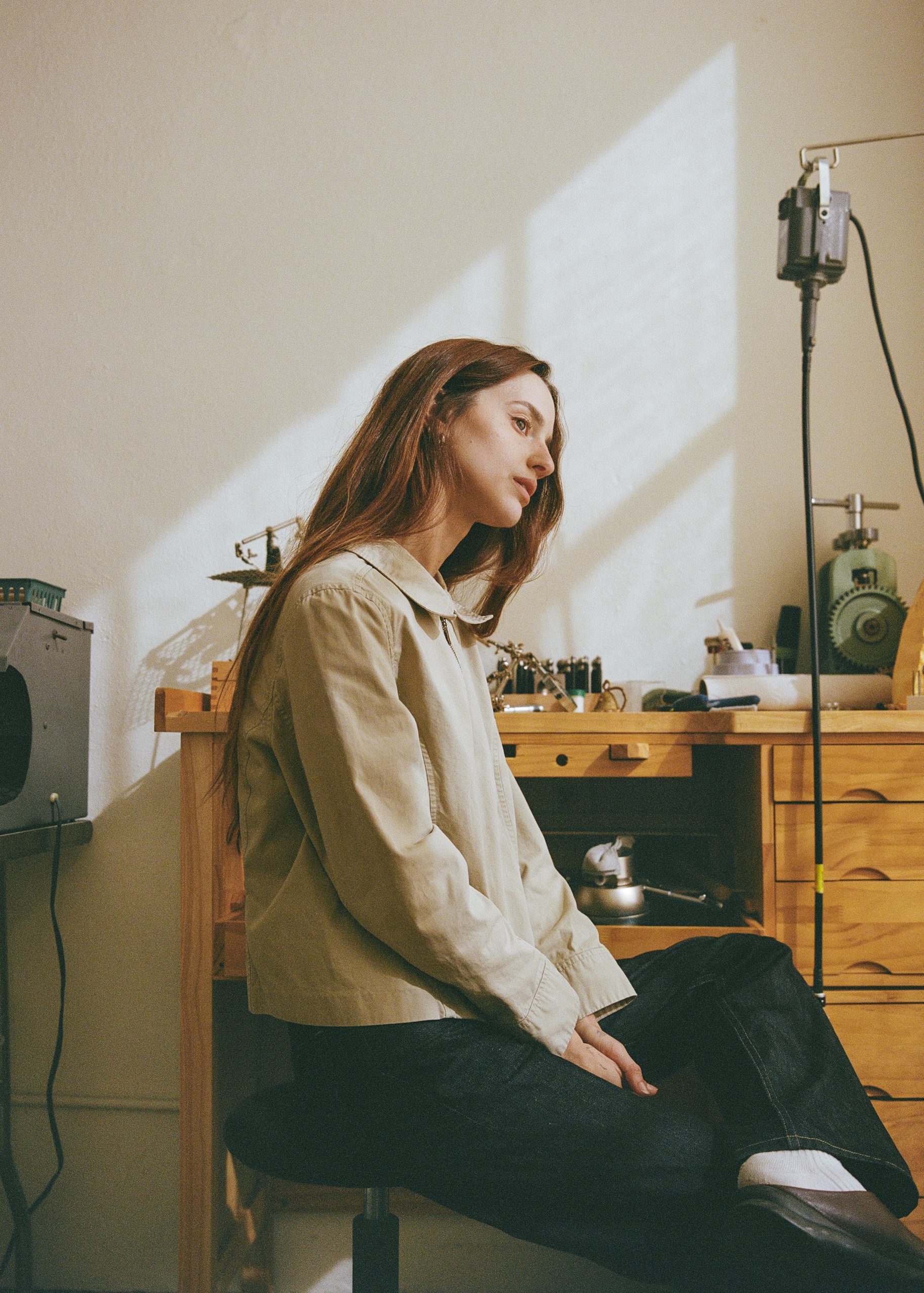
What initially drew you to jewelry design? I read that your grandmother had something to do with it, was that the start?
Sort of, yeah. I’ve always been really crafty. My mom was a psychiatric social worker, but she also paints and is super creative, always crocheting, making things. I was encouraged from a young age to experiment and be hands-on.
When I was little, after my grandma passed away, I used to ask my dad to bring out this special box of her jewelry. Most of it was ornate and not really aligned with my taste now, but I loved trying to figure out how it was made. I think that’s what got me, just attempting to understand how something is constructed.
As a kid, I was already making things, really intricate friendship bracelets at summer camp, bottle cap earrings in middle school, and trying to sell them to local boutiques. In high school, I reworked vintage clothing and sold it on eBay. I’ve always had that entrepreneurial and creative spirit.
You were hustling even as a kid! That’s amazing.
I wanted to go to art or fashion school, but my parents were like, “We’ll pay for public school under a certain cost; otherwise, you’ll have to take out loans.” I didn’t want to be in massive debt, so I went the more pragmatic route and studied graphic design at state school.
Yeah, student debt can be intense.
Exactly. So I studied something “practical,” but I was bored and didn’t really connect with my peers. Around that time, super tiny minimal jewelry was trending, and I became obsessed. I couldn’t afford the pieces I loved, so I figured I’d see if I could make it myself…
I went into local jewelry stores to reverse-engineer how things were made and eventually got referred to a woman who taught metalsmithing in her garage. I loved it. I picked it up quickly and set up a workbench in my college bedroom. I started making things for friends.
After college, I couldn’t land a graphic design job – probably because I was applying to art director roles right out the gate, which is very ‘me’ and ridiculous in hindsight. So I stayed in San Luis Obispo for another year, where my boyfriend had a job in architecture, and I started apprenticing with a jeweler while doing freelance design on the side.
Around that time I launched my own “line” (big air quotes here) and built a website – It was ugly, graphic design student level, but it worked. I was hand making every piece myself, photographing it and uploading it to the site. I started posting to Instagram right when it launched, using it as a way to document the process. At one point, Instagram suggested my account, and I went from 40k to 200k followers overnight. The engagement wasn’t great, but it gave me visibility. I told myself, “I’ll give this thing a year. If it doesn’t work, I’ll get a real job.”
And clearly it worked out. That’s such a great “fake it till you make it” story.
Yeah. And speaking of college, I went to Cal Poly San Luis which isn’t a liberal arts school; it’s very trad-frat-esque and STEM-focused. I was the only girl in my dorm not in a sorority. But I think being so different from my peers helped me ignore outside comparisons. I didn’t have that “am I good enough?” spiral because no one else around me was doing what I was doing. The naivete fostered a sense of confidence in my pursuits.
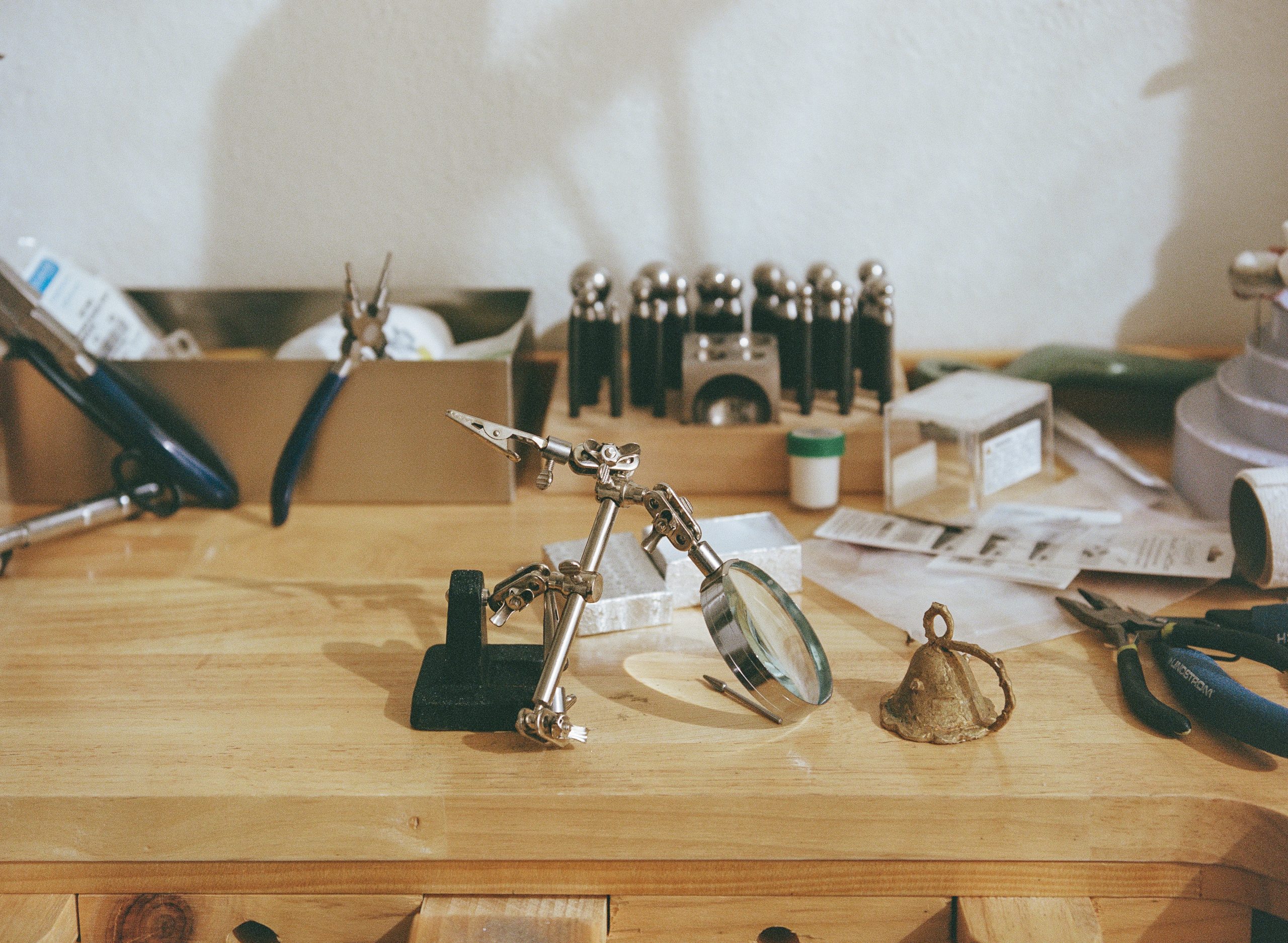
So you were just like, “Why wouldn’t this work out?”
Yeah exactly. Over the last 11 years, the business has gone through a lot of phases. At one point I had five full-time employees, and it started to drift away from the reasons I started it. Now it’s just me, one full-time person, and a handful part-timers. I scaled back intentionally. It started feeling like a faceless DTC brand instead of a designer-led studio with a soul.
I’ve also recently gotten back into physically making jewelry again. For a while, I wasn’t making anything myself.
That’s really interesting, that you’ve returned to the craft in the last couple of years.
Yes, but it’s been a journey to get here. About four years ago, I hired an operations director who came from the startup world. She pushed for fast growth and market share, and while we were grossing more than ever, I was amassing debt and burning out.
At the same time, I was going through a major breakup and just trying to hold everything together. That hire didn’t work out – she was with me less than a year, but it took a long time to unravel what happened internally.
That sounds exhausting. You’d think hiring more people would relieve stress, not add to it.
Totally. But I learned from it. Some of the most clarifying lessons came out of that experience. It forced me to reset and go back to a business model that felt more in alignment – smaller, more creative, more personal.
You didn’t know what you were doing — and I don’t mean that in a bad way — you were a new businesswoman. So it’s like, “Okay, we’re growing, I guess I should hire someone who supposedly knows what they’re doing because they’ve worked in startups.” That just seems logical. Anyone would think that.
Yeah, exactly. And what I’ve come to realize is that there are so many ways to run a business. I never wanted to scale with the goal of selling the company. But a lot of people assume that’s the playbook — grow top-line revenue, grow market share, and figure out the rest later when someone acquires you. But for me, the point of this was to create a life that felt good. And at one point, I completely lost that plot. It took about two years to fully clean everything up.
As of the past few years we’re profitable again, and the team is small but so solid and a joy to work with. I’m back to designing and making things myself again, even just for fun (for now!). That doesn’t always happen consistently, but it’s what lights me up.
I like the business side too – strategy, marketing, planning all of it…but I’ve realized that success looks different for everyone. For me, it’s about having the space and time to get to choose what this looks like in order to match my life, which can ebb and flow over time, and right now that means having more time to be creative.
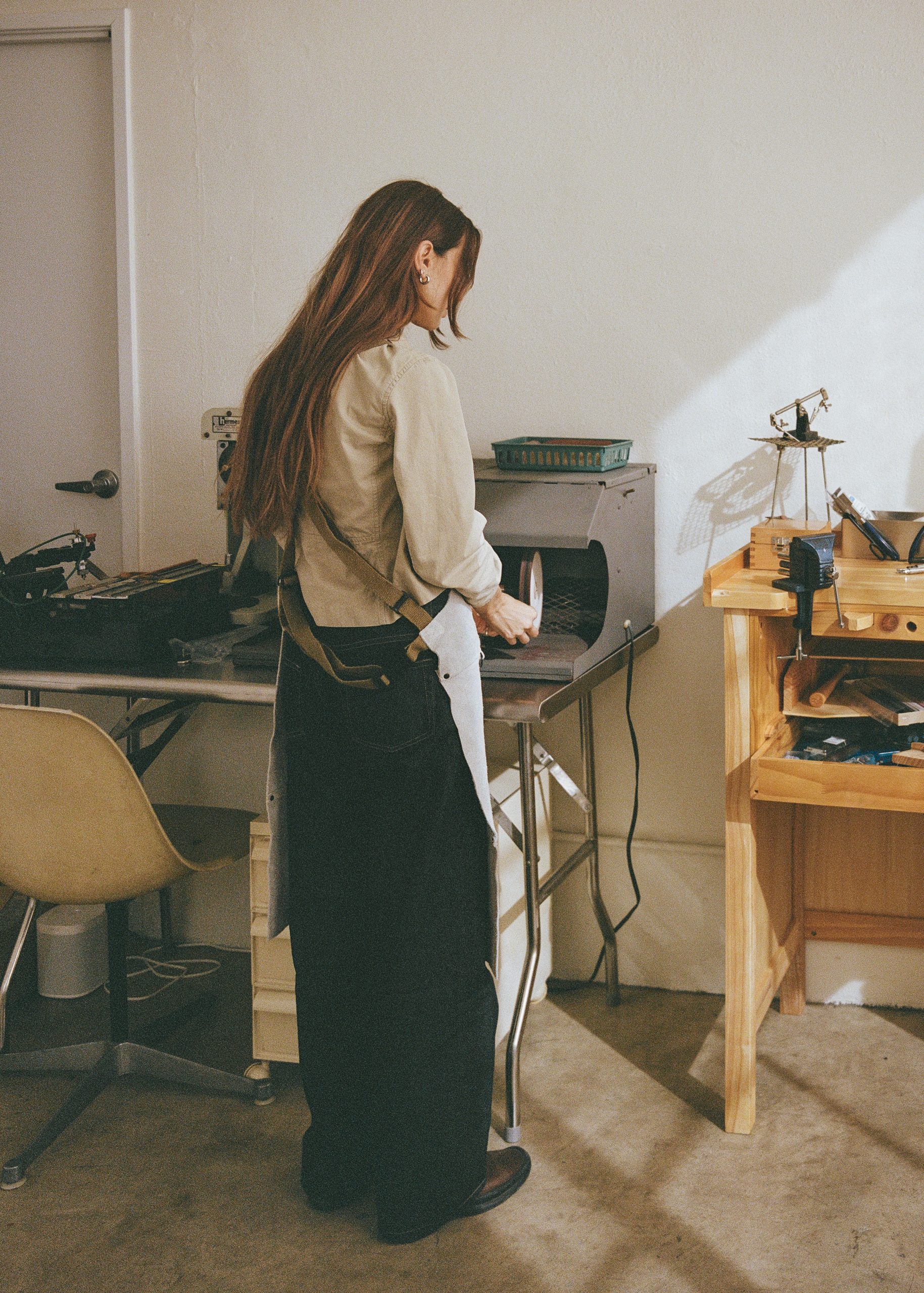
Totally. You start to question, am I actually doing the thing I set out to do?
Exactly. Jewelry lives in this murky space between design, fashion and art. I have friends who are painters or sculptors with dedicated studio practices, and I’m like – I’m not doing that. I’m running a business. I’m sketching, overseeing production, planning photoshoots, managing a team, handling logistics etc… It can feel disconnected from the hands-on process.
Right now, success to me is carving out time to get back into the studio – to make something with my own two hands. To have an “art practice,” in a loose sense. So I guess this goes back to having the type of business that can afford me time, time and flexibility feels like a luxury to me and a true marker of success.
That’s so interesting. I interview a lot of actors and musicians, and they always talk about getting back to their childhood selves, that sense of play. And it sounds like that’s what you’re trying to do, too.
Totally. Even if I don’t sell the pieces I make (yet!), it helps me stay connected to that creative spark. Sometimes those ideas find their way back into the business, sometimes they don’t. But they open something up. When your hobby becomes your job, you have to be really intentional about keeping it fulfilling. A friend of mine talks about “lifestyle businesses”, in the sense of building your work around the life you want.
I’ve had to get better at asking myself, am I doing this because I want to? Or because this fits someone else’s view of success.
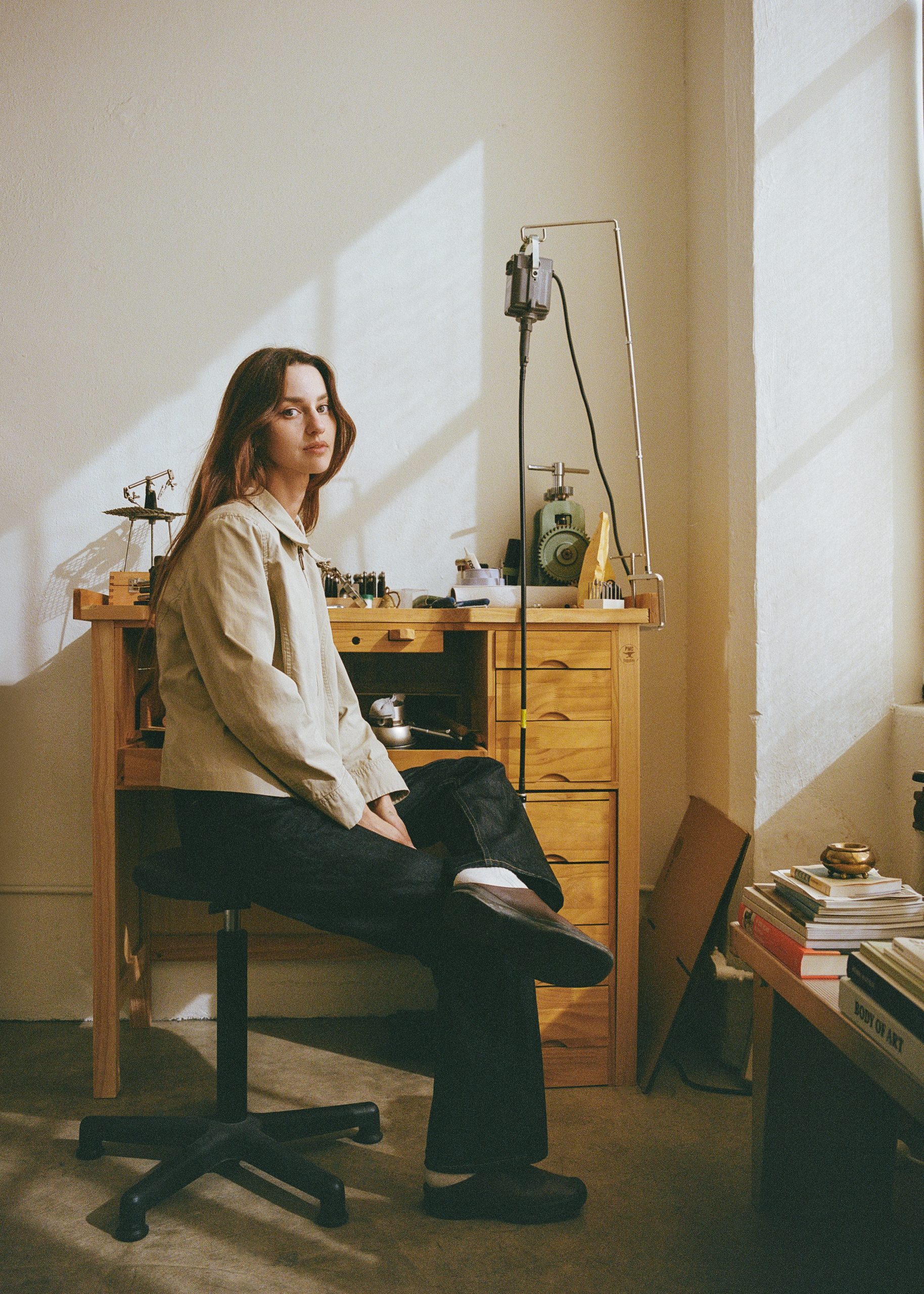
When you’re brainstorming, what inspires you? Are you pulling from anything specific lately?
For my own work?
Yeah. I think when your creativity becomes your job, it’s hard to separate it. Even for me, I don’t write just for fun anymore. I only write for work. So I’ve been trying to get back to the original reason I started.
I’ve always been someone who notices things… tiny details, materials, shapes. If I’m at a gallery, I might fixate on a gesture in a painting. If I’m at a flea market, it might be the leg of a chair. Having ADHD probably plays into that hah, being hyper-aware, always visually stimulated.
What’s funny is that my personal studio work doesn’t look like J. Hannah at all. Prior to my many years hiatus from the bench I was a hand-fabrication-only gal, but I’ve really taken to wax carving as of late. The forgiving nature of the form produces a wobblier aesthetic outcome than I’m used to in my usual design work, but I’m leaning into it… The outcome is never quite what I set out for, I’ve come to like that and I’m learning as I go.
It’s kind of like being a student again. I love that. Before we wrap up, what advice would you give to someone starting their own creative business now?
Be patient, and be kind to yourself. You’re not supposed to know everything at the beginning, clarity takes time and is often only legible in hindsight anyway. There’s so much noise around how a business should grow: scaling quickly, building a team, marketing and chasing press. That doesn’t mean it’s right for you. And honestly, a lot of the advice out there about scaling or “hacking growth” doesn’t apply if your goal is to build something sustainable and personally meaningful.
On a similar note, try not to measure your progress against other people’s metrics. Focus on building something that actually aligns with how you want to live, not just what looks successful from the outside. Mostly, I’d say: stay close to the work that lights you up. If you lose that, it’s hard to justify everything else.
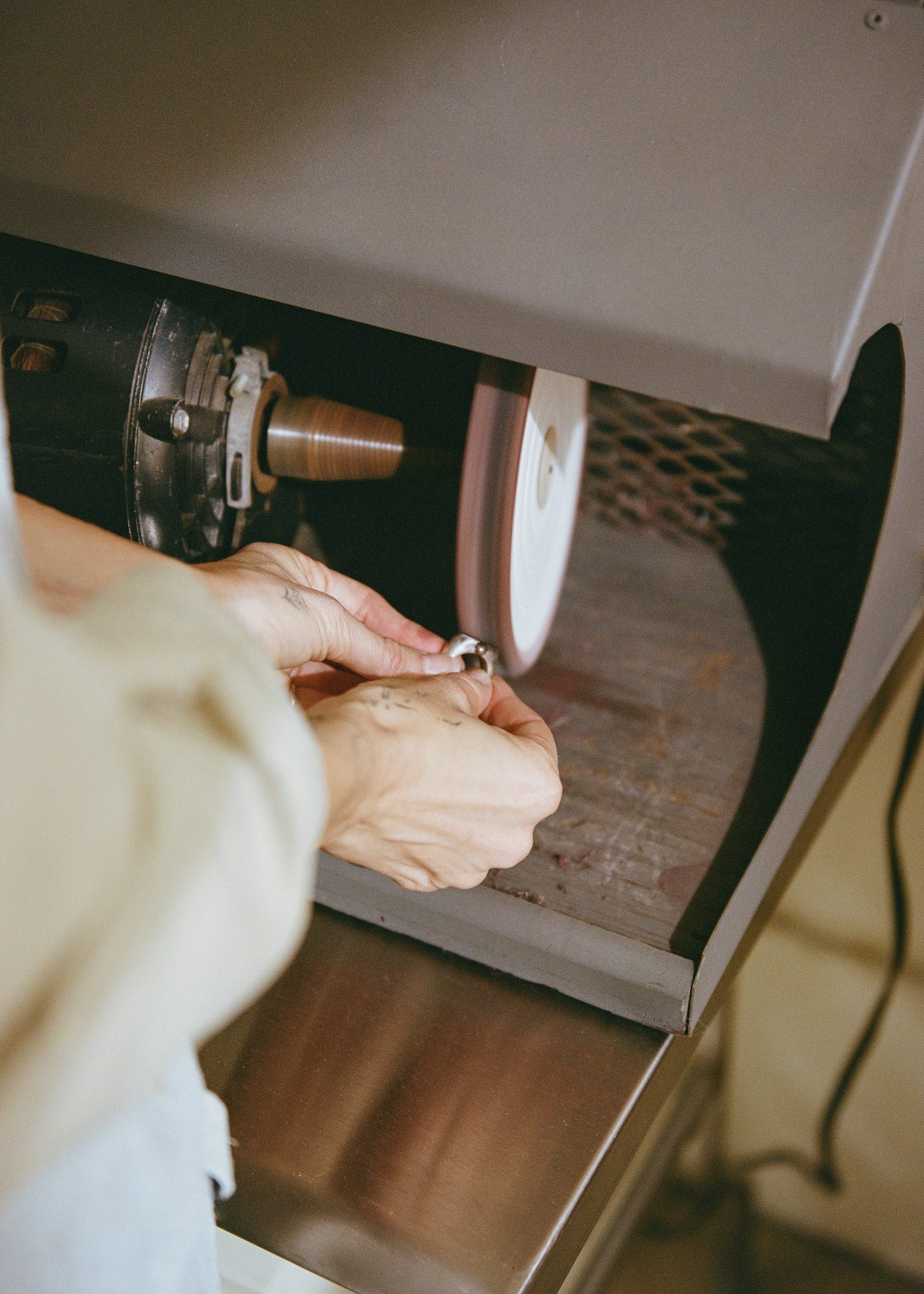
Learn more about J.Hannah at jhannahjewelry.com.
Photography Jane Dylan Cody

